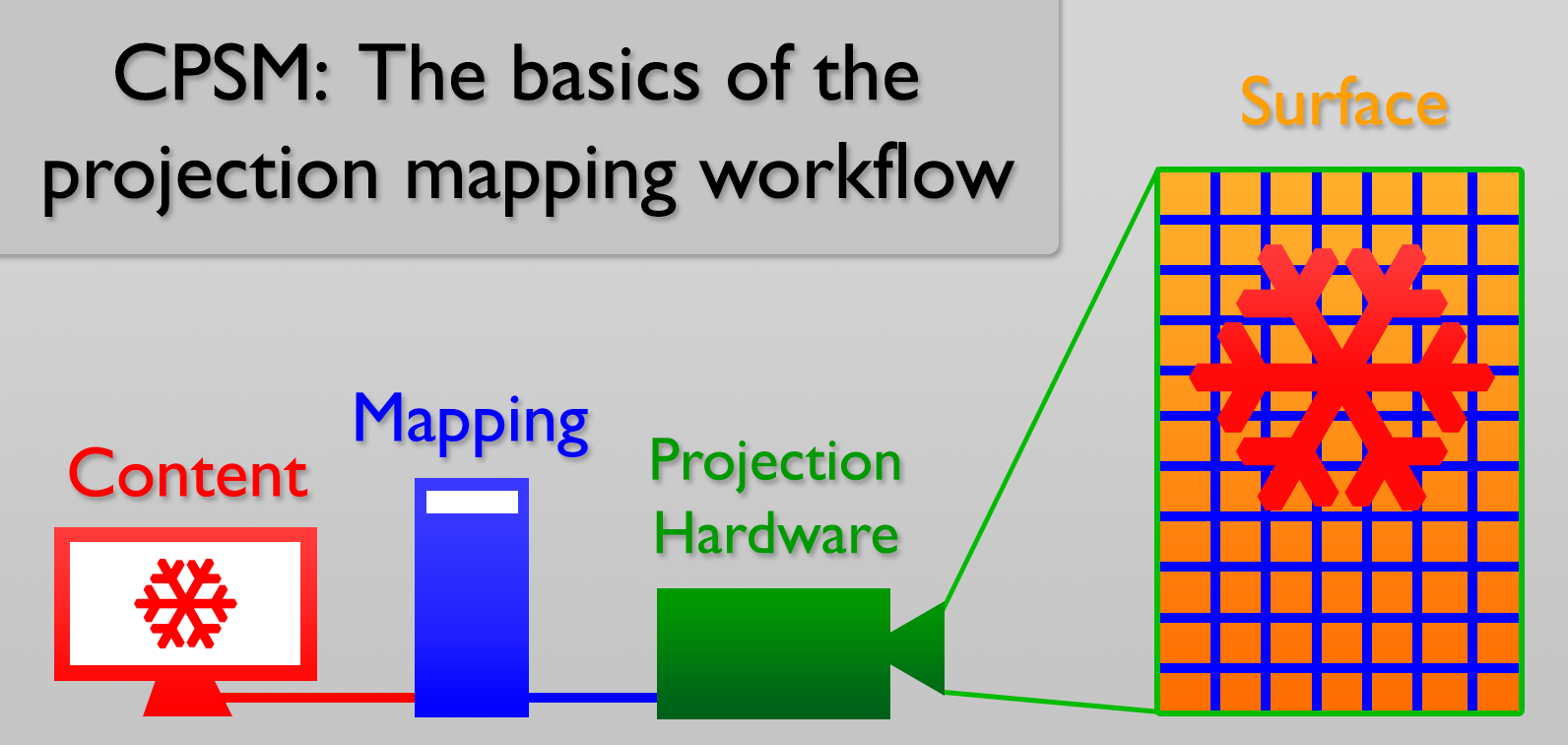Choosing Video Projection Hardware & Space
When projection Mapping you obviously need a video projector. But matters which one you choose as they all have different specifications that influence the outcome.
Check out this awesome website to help you calculate these things & find the perfect video projector : https://www.projectorcentral.com/projection-calculator-pro.cfm
Features of a projection mapping projector
Luminosity
Luminosity describes the amount of light a video projector puts out. It is measured in lumens. A high number of lumens means a projector is more powerful. As mentioned previously, powerfulness itself isn’t enough. You also need to take all the constraints of a specific project into account, as these might reduce a projector’s objective powerfulness, such as the light levels of a location, the expected image size and the material of the projection surface.
Contrast ratio
Contrast levels are linked to the luminosity difference between white and black (absence of color). No video projector is able to project perfect black—this color is usually replaced with a very dark grey.
Contrast is described by a ratio, such as 500:1. The bigger the difference between both numbers, the better the contrast. Therefore, 1,000:1 provides better contrast levels than 500:1.
Resolution
A projector’s resolution is the number of pixels, from side to side and top to bottom, which makes up your projected image. A high number of pixels means the image will be more precise. A low number of pixels means it will be harder for the naked eye to distinguish them.
A projector’s resolution should be as close to possible as the image’s. If you wish to project full HD content (1,080p), this means your projector also needs full HD resolution. If you use a projector that is more powerful (4k, for example), this will lead to a disappointing result.
When choosing a projector, it also depends on where you plan to do this mapping. Other key factors to consider :
Light conditions
The light level of the area where your mapping is supposed to take place is a fundamental factor, as light conditions play a significant role regarding the quality of the projected image.
Direct light on the projection surface needs to be avoided at all costs, whether it is natural or artificial, as it would fade the image, even with strong contrast levels.
Therefore, you should pick a fairly dark environment without direct light coming to your projection area. It is impossible to do Projection
Image size and throw ratio
Image size and projection distance are linked by a very simple mathematical formula:
This throw ratio is linked to each type of video projector. It is a number that falls between 0,3 and 12. The bigger this number, the longer the throw distance. Thanks to this formula and by knowing two parameters, you can easily find out what the third parameter is.
Here is the calculator again: https://www.projectorcentral.com/projection-calculator-pro.cfm
Material of your projection surface
The material of your projection surface is also a crucial factor to consider. You should pick a light-colored surface and pick matt materials to reduce light reflection. If you end up using a shinier surface, the image quality will decrease, and you might see your projector’s light’s reflection. This should be avoided to ensure better results.
Tip: If using a video projector with a short focal distance (with a throw ratio below 0.5), we recommend avoiding flexible projection surfaces, such as fabric. This is because even a slight movement of the projection surface might distort your image.


